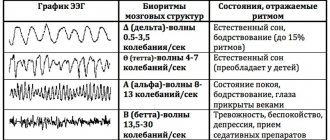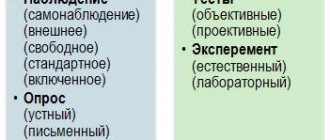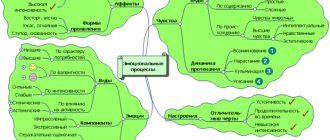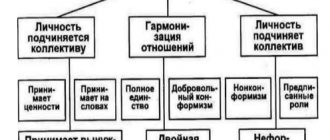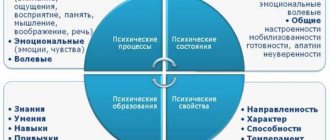Neuropsychology is a scientific field that was created on the border of neuroscience and psychology, studying the functioning of brain structures and their connection with mental processes and the behavior of living beings. Practical neuropsychology is used in research organizations that engage in clinical research, is used in judicial and investigative institutions, and in specialized clinics with the direction of clinical neuropsychology.
Practical neuropsychology is used in solving problems of medical psychology: diagnosis and rehabilitation. The clinical and theoretical components of neuropsychology operate in inextricable unity, under the initial conditions of the formation and development of neuropsychology.
Practical neuropsychology is at the stage of development, its main directions are determined by the expansion of the scope of application of the method of syndromic neuropsychological activity to the diagnosis of such categories of patients in which mental dysfunctions are less pronounced than with tumors and are more diffuse in their manifestation.
At the same time, neuropsychological qualification of the structure of mental disorders requires a systematic description of syndromic diagnostic data, containing what has just entered into practice, but has not yet been covered in previously published fundamental research.
Nowadays, such a direction of psychology as the neuropsychology of individual differences is beginning to actively develop, it is also called differential neuropsychology. This branch studies the brain organization of mental processes and the states of healthy individuals, based on the methodological and theoretical achievements of neuropsychological science. The relevance of the method of neuropsychological analysis of mental functions in healthy individuals is determined by practical and theoretical information.
The main theoretical problem arising in the field of neuropsychology is the need to answer the question of the possibility of extending general neuropsychological ideas about the cerebral organization of the psyche, which developed during the study of the consequences of local brain lesions, to the study of the cerebral mechanisms of the psyche of healthy individuals.
Subject, tasks, methods of neuropsychology
Neuropsychology is a branch of psychology that studies the brain mechanisms of higher mental functions and their connection with brain systems.
The subject of neuropsychology is brain structures involved in mental processes, emotional states and personal characteristics based on local brain lesions.
The object of neuropsychology is the brain of a sick person, damaged as a result of injuries, hemorrhages, cancerous tumors, and hereditary anomalies.
Neuropsychology was formed due to the demands of practice and the need to diagnose local brain lesions and restore impaired mental functions.
E.Yu. Balashova, B.A. Arkhipov, L.S. Tsvetkova and others. The validity of this statement is confirmed by the popularity it enjoys among psychologists, speech therapists, child neurologists and development teachers [1].
See also[edit]
- Philosophical portal
- Psychological portal
- Behavioral Neuroscience
- Biological psychology
- Clinical neuropsychology
- Cognitive neuropsychiatry
- Cognitive neuropsychology
- Cognitive neuroscience
- Cognitive psychology
- Comparative neuropsychology
- List of important publications in neuropsychology
- List of neurological conditions and disorders
- Neurology
- Neuropsychoanalysis
- Neuropsychiatry
- Neurology
- Psychiatric genetics
Neuropsychology methods
There are 2 groups of methods:
I. The first group of methods (scientific) - comparative - anatomical, irritation and destruction.
– The comparative anatomical research method makes it possible to clarify the dependence of the ways of life and behavior of animals on the structural features of their nervous system; with the help of the method, the principles of brain function, as well as the structure of the cerebral cortex, were clarified.
– The stimulation method involves analyzing the characteristics of the HMF when exposed to the brain. There are: direct stimulation, indirect stimulation and stimulation of individual neurons.
1. The method of direct stimulation is a direct impact on individual areas of the cortex using electric current or mechanical, chemical stimuli (For example: in 1871, Fritsch and Gitzik thus identified the motor zones of the cortex in dogs, C. Sherington (1903) conducted experiments on monkeys, V. Penfield was the first to use this method on humans (1945).
However, the method has limitations in humans. Therefore, the method of indirect stimulation appears.
2. The method of indirect stimulation or indirect stimulation of the cortex - reveals changes in the electrical activity of parts of the brain under the influence of various factors (for example: the method of evoked potentials of EP, when in response to a certain impact changes in rhythms are recorded in the spectrum of the electroencephalogram; microelectrode method - implantation of electrodes into neurons brain to identify their activity under various influences).
3. The method of destruction (or switching off) - involves the destruction of a certain area of the animal’s brain and observation of the characteristics of its behavior; in humans, the method is applicable during neurosurgical operations and brain injuries.
There are: irreversible disorders (surgical removal of certain parts of the brain, the method of cutting the commissures of the brain, proposed by R. Sperry), in which the function is completely lost, and reversible disorders, which are associated with the temporary shutdown of a separate part of the brain with subsequent restoration of functions: cooling below 25 degrees leads to the cessation of neuronal activity (for example: the Wada method, which involves injecting a special drug into the carotid artery and turning off the corresponding hemisphere of the brain).
II. The second group of methods (practical methods) are used by psychologists, speech therapists, child neurologists, and teachers.
(Within the framework of neuropsychology, there is also a section of neurorehabilitation . The main developments in this area are being carried out at the Moscow Center for Speech Pathology and Neurorehabilitation under the scientific guidance of Prof. M. Shklovsky. The main task of neurorehabilitation is the development of methods for restoring impaired HMF, differentiated in relation to the acute and long-term stages of the disease. The combination of methods used constitutes a comprehensive system of neurorehabilitation aimed at restoring the motor and analytical spheres, speech and other types of higher mental activity, as well as the social status of the patient.)
In the second group of methods, there are 3 approaches:
1️⃣. The method of syndromic analysis or “ battery of Luriev methods proposed by A.R. Luria (the founder of neuropsychology in Russia) .
A. R. Luria selected tests that allow one to assess the condition of all the main HMFs (according to their parameters). These techniques evaluate the brain structures that support mental processes, which makes it possible to determine the area of brain damage. The proposed method is based on a systematic approach and qualitative analysis of defects in cognitive processes and personal characteristics (speech, thinking, writing, counting, memory), voluntary movements and actions.
Luriev method of neuropsychological research
The “Battery of Luriev Methods” includes:
1) a formal description of the patient, his medical history and the results of various laboratory and instrumental examinations (EEG, biochemistry, etc.);
2) a general description of the patient’s mental status – state of consciousness, ability to navigate place and time, level of criticism and emotional background;
3) studies of voluntary and involuntary attention;
4) studies of emotional reactions based on the patient’s complaints, according to his assessment of faces in photographs, plot paintings;
5) studies of visual gnosis (perception) - using real objects, contour images, when presenting various colors, faces, letters and numbers;
6) studies of somatosensory gnosis using tests of recognition of objects by touch, by touch;
7) studies of auditory gnosis when recognizing melodies, localizing a sound source, and repeating rhythms;
 studies of movements and actions when performing the latter according to instructions, when setting poses;
studies of movements and actions when performing the latter according to instructions, when setting poses;
9) speech research - through conversation, repetition of sounds and words, naming objects, understanding speech and rarely encountered words, logical and grammatical structures;
10) studies of writing - letters, words and phrases;
11) reading studies - letters, meaningless and meaningful phrases and misspelled words;
12) memory studies - words, pictures, stories;
13) research into the counting system;
14) research into intellectual processes - understanding stories, solving problems, correct endings of phrases, understanding analogies and opposites, figurative and general meaning, ability to classify.
2️⃣. Psychometric (North American) - a battery of tests is used, the results are assessed on a standard scale. For example: Luria-Nebraska Battery, Wechsler Intelligence Scale for Adults, etc.
3️⃣. Individually oriented (British School of Neuropsychology) – Initially, screening (selection, triage) studies are carried out. Then an individual set of tests is generated.
A special area of application of neuropsychological methods is the problem of school maladaptation (tests for the study of sensations - visual, auditory, tactile; study of cerebellar function, lateral dominance, etc., for academic performance, learning ability, intelligence, etc.). Using the method of syndromic analysis, it is possible to determine the presence or absence of brain dysfunctions in children with learning difficulties, to reveal the mechanisms underlying these difficulties, and to understand the primary defect that determined their occurrence.
Main directions of neuropsychology
The main areas of neuropsychology are the following:
1. Clinical neuropsychology , which studies patients with local brain lesions.
The main goal is to study neuropsychological syndromes in local brain lesions. Research in this area is of great practical importance for diagnosis, preparation of a psychological report on the possibility of treatment, recovery and prognosis of the future fate of patients. The main method is the method of clinical neuropsychological research. Currently, clinical neuropsychology is studying syndromes associated with damage to the right hemisphere of the brain, defects in interhemispheric interaction, and disruption of deep brain structures. Further development of this area is associated with the development of modern methods for diagnosing local brain lesions.
2. Experimental neuropsychology.
The main task is the experimental study of various forms of disturbances of mental processes in local brain lesions. Thanks to the work of A.R. Luria with students, memory and speech have been most studied. He created a classification of aphasias and expanded ideas about the organization of memory.
Currently, studies are being conducted on the characteristics of disturbances in cognitive processes and the emotional-personal sphere in brain lesions of different locations.
3. Rehabilitation neuropsychology.
The main goal of this direction is the restoration of HMF in case of local brain lesions. The principles and methods of speech restoration have been most developed. Developments in this area began during the Great Patriotic War (A. R. Luria, A. V. Zaporozhets, B. G. Ananyev, A. N. Leontyev). Scientifically based methods for restoring HMF have been proposed, based on the central proposition that complex mental function can be restored by restructuring the functional system. As a result, the damaged function begins to work with the help of a new set of mental means, which implies its new brain organization.
Currently, the scope of activity of neuropsychologists includes patients who have suffered a stroke, various types of brain injuries, etc. New methods of speech restoration, audiovisual methods, group methods, and influence on the emotional and personal sphere of patients are being developed.
The main developments in this area are being carried out at the Moscow Center for Speech Pathology and Neurorehabilitation under the leadership of V.M. Shklovsky.
4. Environmental neuropsychology evaluates the influence of various unfavorable environmental factors on the state of mental functions and on the emotional and personal sphere from the perspective of neuropsychology.
The field began to develop shortly after the Chernobyl disaster, and in the context of a constantly deteriorating environment, this research is becoming increasingly relevant.
5. Developmental neuropsychology . The task of developmental neuropsychology is to identify patterns of brain development.
In recent years, childhood neuropsychology has emerged as an independent field. This is a new area of neuropsychology that studies the specifics of mental dysfunction in local brain lesions in children.
Much attention is paid to the neuropsychological analysis of learning difficulties in children of primary school age in connection with brain dysfunctions.
6. Psychophysiological direction is a direction whose task is to study the physiological mechanisms of disorders of higher mental functions. It develops in close connection with psychophysiology, making extensive use of its research methods (electroencephalography, oculography, myography, etc.).
7. The diagnostic direction is the practical application of various neuropsychological methods to determine the area of brain damage and the dynamics of the state of higher mental functions in the pre- and postoperative period.
These methods were developed by A. R. Luria on the material of traumatic and tumor lesions of the brain, but they are also used in the stroke clinic. They are increasingly used to assess the dynamics of the state of HMF in the pre- and postoperative periods, since neuropsychological syndromes appear earlier and disappear later than any other symptoms. In addition, these methods are used to monitor drug therapy in patients who have undergone neurosurgical operations.
8. The rehabilitation direction of the practical application of neuropsychological methods is associated with the restoration of impaired HMF, speech, intellectual and mnestic activity.
Currently, a neuropsychological approach to the study of a healthy person is increasingly being developed, for example, the study of interhemispheric asymmetry.
Founder of Russian neuropsychology -
Alexander Romanovich Luria.
Luria Alexander Romanovich, Soviet psychologist and neuropathologist, one of the founders of neuropsychology. Doctor of Pedagogical Sciences (1937), Doctor of Medical Sciences (1943), Professor (1944), full member of the Academy of Pedagogical Sciences of the RSFSR. Photo: i.pinimg.com
Links[edit]
- Posner, Michigan; Digirolamo, G. J. (2000). "Cognitive neuroscience: origins and prospects." Psychological Bulletin
.
126
(6):873–889. DOI: 10.1037/0033-2909.126.6.873. PMID 11107880. - "The Great Canadian Psychology Site - Researchers". University of Calgary. Retrieved August 14, 2021.
- Finger, Stanley (2000). Minds Behind the Brains: A History of the Pioneers and Their Discoveries. New York: Oxford. P. 22. ISBN 978-0-19-518182-1.
- Highfield, Roger. "How Imhotep Gave Us the Cure". Daily Telegraph
. Retrieved March 24, 2021. - Carus, Paul (1905). "The Conception of the Soul and the Belief in Resurrection among the Egyptians." Monist
.
15
(3): 409–428. DOI: 10.5840/monist190515326. JSTOR 27899609. - Warren, Howard (1921). "History of associative psychology". Nature
.
110
(2750): 19–30, 259, 296. Bibcode: 1922Natur.110S..75. . DOI: 10.1038/110075d0. HDL: 2027/chi.65413836. - ^ a b “History of neuropsychology | BRAIN" . brainaacn.org
. Retrieved September 25, 2021. - ^ abcde Benton, Alabama; Sivan, Abigail (2007-04-01). "Clinical neuropsychology: a brief history". Disease-month: DM
.
53
(3): 142–7. DOI: 10.1016/j.disamonth.2007.04.003. PMID 17544643. - ↑
Finger 2000, page 44 - ↑
Finger 2000, p. 92 - Finger, Stanley (1994), "History of neuropsychology", Neuropsychology
., Elsevier, pp. 1–28, DOI: 10.1016/b978-0-08-092668-1.50007-7, ISBN 9780080926681 - Finger, Stanley (2005-03-03), "Thomas Willis: The Functional Organization of the Brain", Minds Behind the Brain
, Oxford University Press, pp. 85–100, DOI: 10.1093/acprof:oso/9780195181821.003.0007, ISBN 9780195181821 - ^ a b Arraez-Aybar, Luis Alfonso; Navia-Alvarez, Pedro; Fuentes-Redondo, Talia; Bueno-Lopez, Jose-L (March 2015). "Thomas Willis, pioneer of translational research in anatomy (on the 350th anniversary of Cerebri Anatomy)". Journal of Anatomy
.
226
(3):289–300. DOI: 10.1111/joa.12273. ISSN 0021-8782. PMC 4337668. PMID 25688933. - Eadie, M. J. (March 2003). "Pathology of Animal Spirits - Clinical Neurology of Thomas Willis (1621-1675). Part II - Disorders of Internal Abnormal Spirits of Animals." Journal of Clinical Neuroscience
.
10
(2): 146–157. DOI: 10.1016/S0967-5868(02)00164-9. ISSN 0967-5868. PMID 12637040. - Benton, Arthur (2000). History of Neuropsychology: Selected Papers
. USA: Oxford. - ↑
Finger 2000, p. 151 - Viney, Wayne (2003). History of Psychology: Ideas and Context
(3rd ed.). Boston: Pearson. - Cubelli, R.; De Bastiani, P. (2011). "150 years after Leborgne: Why is Paul Broca so important in the history of neuropsychology?". Cortex
.
47
(2): 146–147. DOI: 10.1016/j.cortex.2010.11.004. PMID 21112584. - Carmichael, L. (1959). "Carl Spencer Lashley, experimental psychologist." The science
.
129
(3360): 1410–1412. Bibcode: 1959Sci…129.1410C. DOI: 10.1126/science.129.3360.1410. PMID 13658968. - "What is experimental neuropsychology?" . www.allpsychologycareers.com
. Retrieved September 25, 2021. - "Clinical and Experimental Neuropsychology". UKEssays
. Retrieved September 25, 2021. - Cohen, Dr. Douglas (2008). "Neuropsychology". Dr. Doug Cohen
. - Stebbins, Glenn T. (2007), "Neuropsychological testing", Textbook of Clinical Neuroscience
., Elsevier, pp. 539-557, doi:10.1016/b978-141603618-0.10027-x, ISBN 9781416036180 - Hall, Jeremy; O'Carroll, Ronan E; Frith, Chris D (2010), "Neuropsychology", A Companion to Psychiatric Research
, Elsevier, pp. 121-140. Doi: 10.1016/b978-0-7020-3137-3.00007-3, ISBN 9780702031373 - ↑
Garson, James (2018), "Connectionism", in Zalta, Edward N. (ed.), The
Stanford Encyclopedia of Philosophy
(Fall 2021 edition), Metaphysics Research Laboratory, Stanford University, retrieved September 25, 2018. - Boyle, G. J., Saklofske, D. H., & Matthews, G. (2012). (Ed.), SAGE Benchmarks in Psychology: Psychological Assessment, Vol. 3: Clinical neuropsychological assessment. London: SAGE. ISBN 978-0-85702-270-7
- Xiao-Jing Wang; Wei Wei (NYU Global Brain Project) (December 7, 2021). "Inhibitory control in the cortico-basal ganglia-thalamocortical loop: complex regulation and interactions with memory and decision-making processes". Neuron
.
92
(5):1093–1105. DOI: 10.1016/j.neuron.2016.10.031. PMC 5193098. PMID 27866799. - Bauer, R. M.; and others. (May 2012). "Computerized Neuropsychological Assessment Devices: A Joint Position Paper of the American Academy of Clinical Neuropsychology and the National Academy of Neuropsychology". Archives of Clinical Neuropsychology
.
27
(3):362–373. DOI: 10.1093/arclin/acs027. PMC 3499090. PMID 22382386.
Main directions of scientific research in neuropsychology
– Cultural-historical concept of mental development, participated in the creation of the theory of activity. On this basis, he developed the idea of the systemic structure of higher mental functions, their variability, plasticity, emphasizing the lifetime nature of their formation, their implementation in various types of activities.
– Investigated the relationship between heredity and upbringing in mental development. Using the twin method traditionally used for this purpose, he made significant changes to it, conducting an experimental genetic study of the development of children in conditions of the targeted formation of mental functions in one of the twins. Showed that somatic symptoms are largely determined genetically, elementary mental functions (for example, visual memory) - to a lesser extent. And for the formation of higher mental processes (conceptual thinking, meaningful perception, etc.), the conditions of education are decisive.
– In the field of defectology, he developed objective methods for studying abnormal children. The results of a comprehensive clinical and physiological study of children with various forms of mental retardation served as the basis for their classification, which is important for pedagogical and medical practice.
– Created a new direction - neuropsychology, which has now become a special branch of psychological science and has received international recognition. The development of neuropsychology began with studies of brain mechanisms in patients with local brain damage as a result of injury.
– Developed a theory of localization of higher mental functions,
– formulated the basic principles of dynamic localization of mental processes,
– created a classification of aphasic disorders and described previously unknown forms of speech disorders,
– studied the role of the frontal lobes of the brain in the regulation of mental processes,
– studied the brain mechanisms of memory.
Personality.
Each of us makes sense of life in our own way, and this meaning is mediated by processes that bring past experiences into line with the present. Such processes relate to the function of the limbic system, which ensures the adequacy of behavior. The limbic system is closely connected with other systems formed by the midline structures of the brain. Neurons of the midline and limbic structures have an affinity for many chemicals. They not only bind specific chemicals, but also secrete some of them.
Neurochemistry has just begun to study the diverse chemical mediators acting in the midline and limbic structures. But much is already known; Let's list the main body functions regulated by the midline structures (starting from the anterior sections): body temperature, sexual activity (sex hormones), stress response (adrenal hormones), thirst (water content in the body), appetite (blood sugar), feeling of comfort or pain (endorphin levels), sleep and calm (serotonin), dreams (norepinephrine), breathing and cardiovascular activity (carbon dioxide levels in the blood). Certain limbic structures modulate such somatic functions, while others influence this modulatory link depending on the information received through sensory channels. On the other hand, limbic structures influence the sensory and motor cortex, thus influencing our perception and mode of action.
The posterior parts of the frontal lobes are especially closely connected to the limbic system. Interacting with nearby motor zones, as well as with other zones of the convex (convex) surface of the hemispheres, the posterior parts of the frontal cortex influence their activity, determining the adequacy of behavior. When this area is damaged, depending on the location of the lesion, mental functions such as the ability to plan, logically think, and highlight the main thing are severely disrupted. The identification of such connections, bridging the traditional gap between the natural sciences, on the one hand, and the study of the subjective sphere - thinking, emotions, aspirations - on the other, is the subject of neuropsychology.
Symptoms, syndromes and factors in neuropsychology
A neuropsychological symptom is a violation of mental function that occurs with local damage to the brain, due to pathological, traumatic causes, leading to local changes in brain function.
Neuropsychological syndrome is a natural combination of neuropsychological symptoms caused by damage (loss) of a certain factor (or several factors).
Neuropsychological factor is a structural and functional unit of the brain, characterized by a certain principle of physiological activity, the violation of which leads to the appearance of a neuropsychological syndrome.
Tags: neuropsychology
